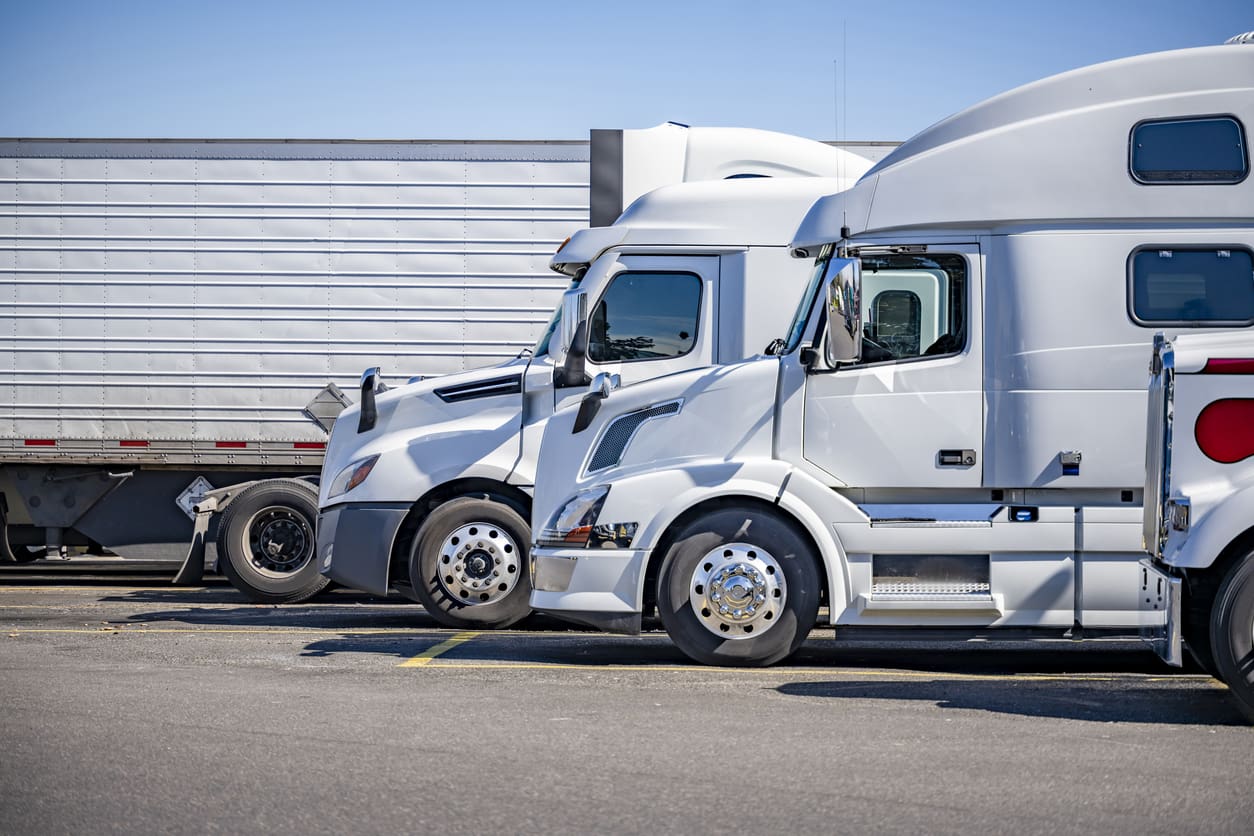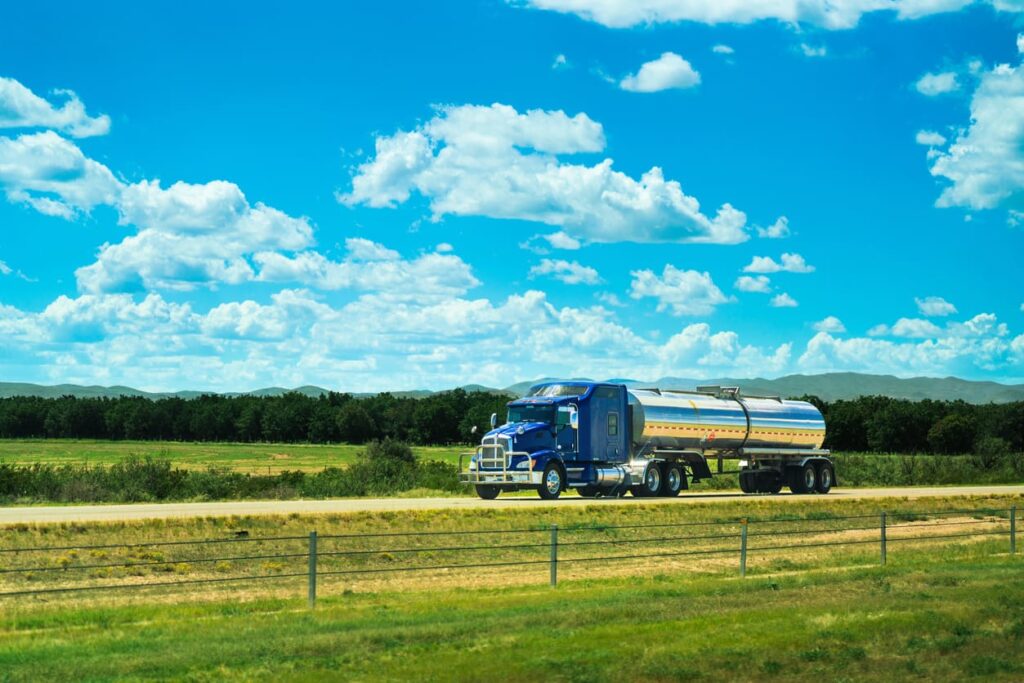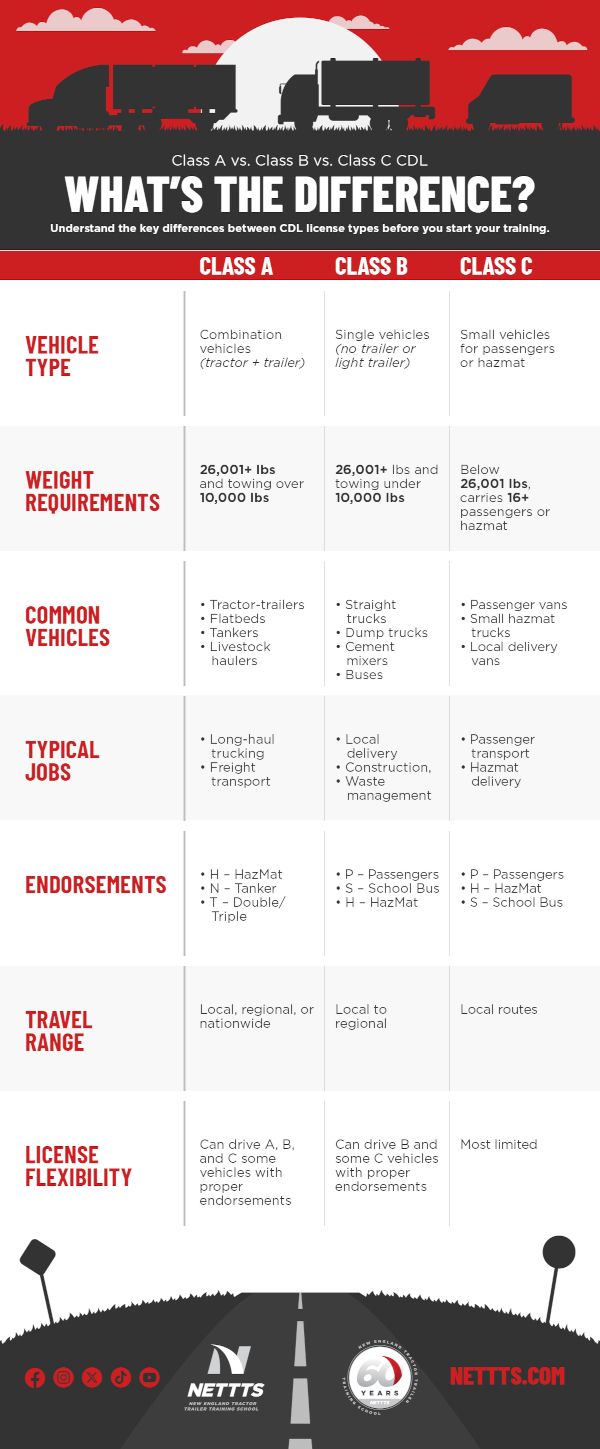
If you’re thinking about becoming a professional truck driver, one of your first steps is deciding which Commercial Driver’s License (CDL) to earn. The type of CDL you choose, Class A or Class B, determines the kind of vehicles you’ll be able to drive and the jobs that may be available to you.
Understanding the difference between these two licenses can help you make the right decision for your career goals.
The Three Classes of CDLs
There are three main classes of commercial driver’s licenses:
- Class A
- Class B
- Class C
Each class is based on the Gross Vehicle Weight Rating (GVWR) and whether the vehicle is towing another.
For official definitions, you can visit the Federal Motor Carrier Safety Administration (FMCSA).
What Is a Class A CDL?
A Class A CDL allows you to drive combination vehicles. An example of this would be a tractor and trailer with a GVWR of 26,001 pounds or more and a towing capacity greater than 10,000 pounds.
This is the license most long-haul and regional truck drivers hold. A Class A CDL also allows you to drive vehicles that fall under Class B, and with the right endorsements, also a Class C.
Common Vehicles Driven with a Class A CDL
- Tractor-trailers (18-wheelers)
- Flatbed trucks
- Tanker trucks
- Livestock carriers
- Truck and trailer combinations
Class A CDL Training
Training for a Class A CDL includes a mix of classroom instruction and hands-on, behind-the-wheel experience. Students learn about:
- Federal and state driving regulations
- Vehicle safety and inspections
- Backing, turning, and coupling maneuvers
- Driving on public roads and highways
- Cargo securement and trip planning
At an ACCSC-accredited school, like New England Tractor Trailer Training School (NETTTS), students can enroll in a Class A CDL training program that meets FMCSA Entry-Level Driver Training (ELDT) requirements.
What Is a Class B CDL?
A Class B CDL allows you to drive a single vehicle with a GVWR of 26,001 pounds or more, or one towing a trailer weighing 10,000 pounds or less.
These vehicles are typically not combination trucks, which makes Class B CDLs ideal for local and regional jobs.
Common Vehicles Driven with a Class B CDL
- Straight trucks
- Dump trucks
- Delivery trucks
- Garbage and recycling trucks
- Buses and motor coaches
- Cement and mixer trucks
With certain endorsements, a Class B CDL can also allow you to operate Class C vehicles, such as small passenger vans or hazmat vehicles.
Class B CDL Training
Training for a Class B CDL combines classroom lessons and behind-the-wheel instruction. Students typically learn about:
- Vehicle safety and inspection procedures
- Trip planning and air brake systems
- Driving in urban and rural environments
- Range maneuvers and road testing
- State and federal compliance
Getting training at an FMCSA-approved training provider, like NETTTS, ensures your Class B Commercial Heavy Straight Truck Training program satisfies entry level driving requirements from an FMCSA approved training provider. This training includes both classroom and practical training designed to prepare you for your CDL exam.
What Is a Class C CDL?
A Class C CDL is required to drive smaller commercial vehicles that don’t meet the weight requirements of Class A or B but are designed to carry passengers or transport hazardous materials. This class of license is common for drivers who work with local delivery companies or passenger transport services.
Common Vehicles Driven with a Class C CDL
- Passenger vans or minibuses carrying 16 or more people, including the driver
- Small hazmat trucks transporting placarded hazardous materials
- Light trucks towing a small trailer that doesn’t qualify for Class A or B
Depending on your job goals, you may also need specific endorsements, such as:
- P (Passenger) – to carry passengers
- H (HazMat) – to transport hazardous materials
- S (School Bus) – to drive a school bus
While Class C licenses are less common for professional truck drivers, they’re often used for certain local delivery, transport, and municipal positions.

CDL Endorsements
Endorsements are additional certifications added to your CDL that allow you to operate specialized vehicles or haul certain cargo types. To earn an endorsement, you’ll need to pass specific written and sometimes skills tests.
Common CDL Endorsements
- T – Double/Triple Trailers
- P – Passenger Transport
- S – School Bus
- H – Hazardous Materials (HazMat)
- N – Tank Vehicle
These endorsements can open the door to more driving opportunities. You can read more about them on the FMCSA Drivers page.
Choosing Between a Class A and Class B CDL
The right CDL depends on your goals and the type of driving career you want.
If you want to drive tractor-trailers and travel across states, Class A is what you’re looking for.
If you prefer smaller vehicles like straight trucks or buses, Class B may be the right fit.
Start Your CDL Journey With NETTTS
At NETTTS, we’ve been training drivers for over 60 years across Connecticut, Massachusetts, and Rhode Island. Whether you’re new to trucking or want to upgrade from a Class B to a Class A CDL, our team can help prepare you with the training and confidence to take your CDL road test.





